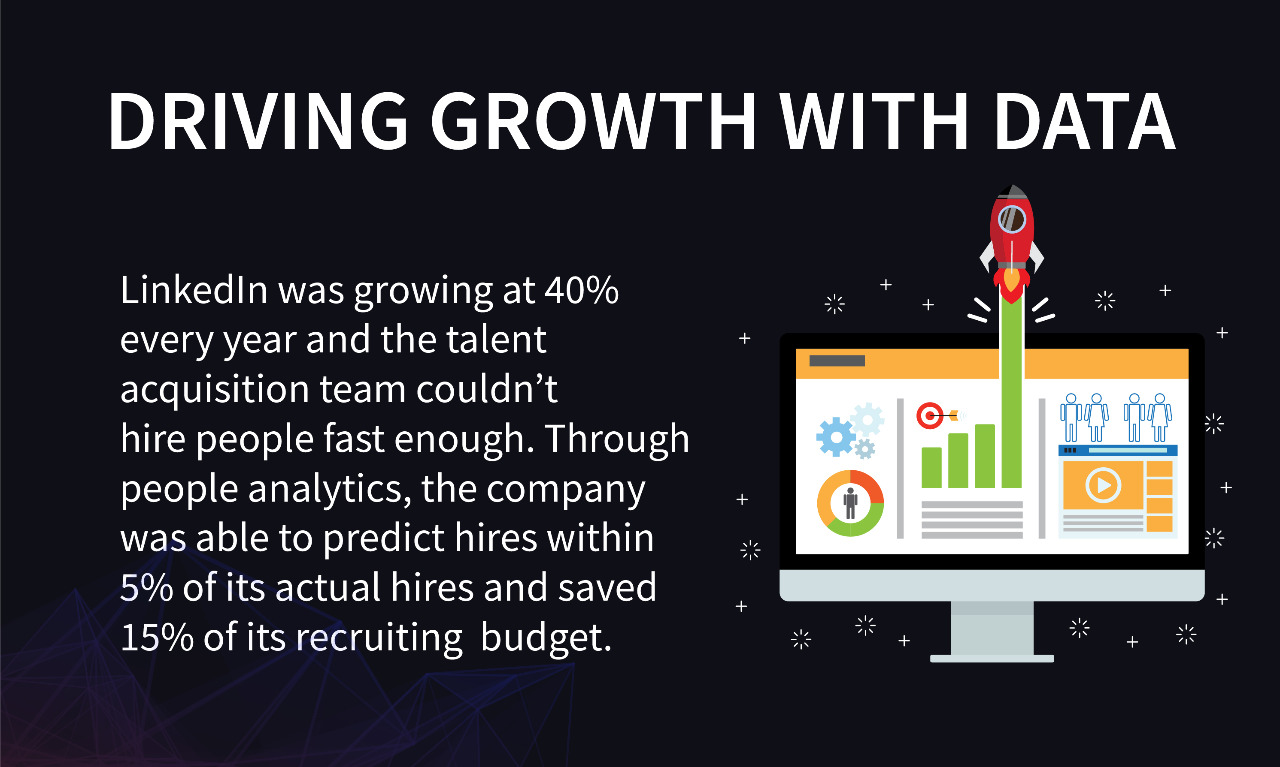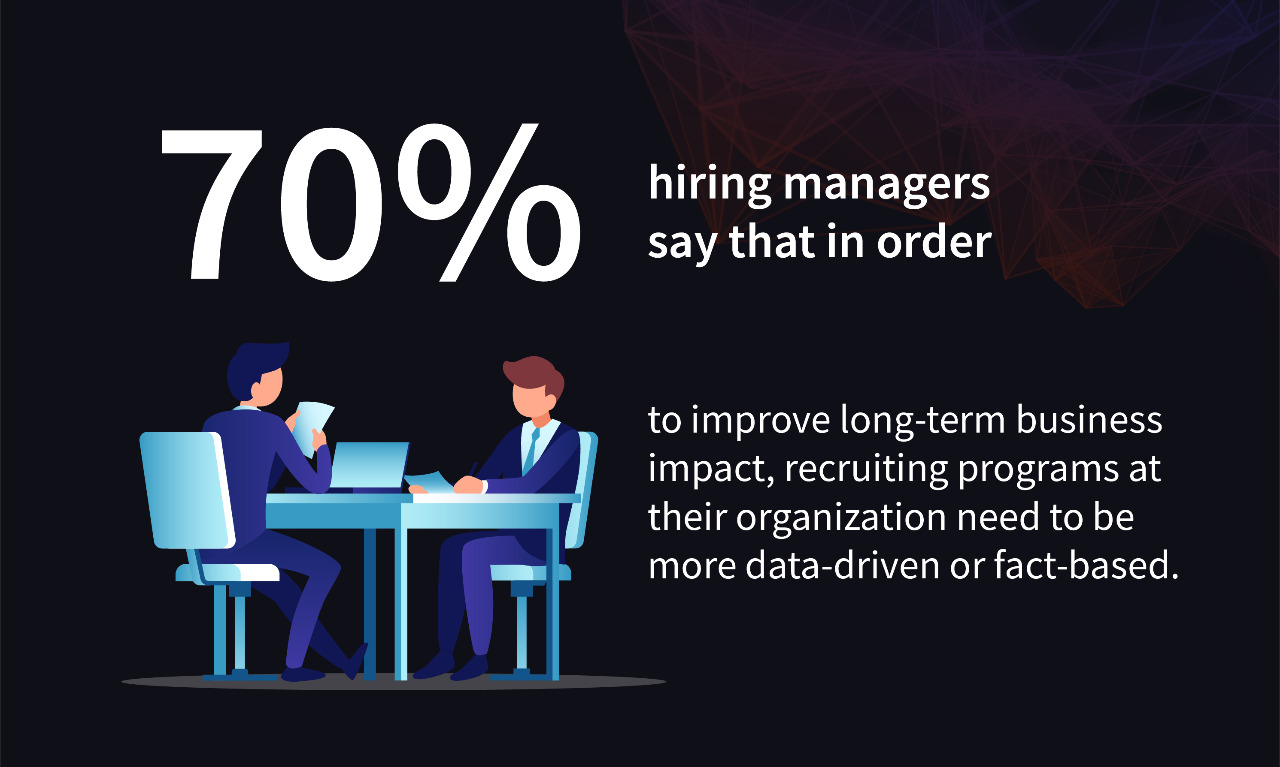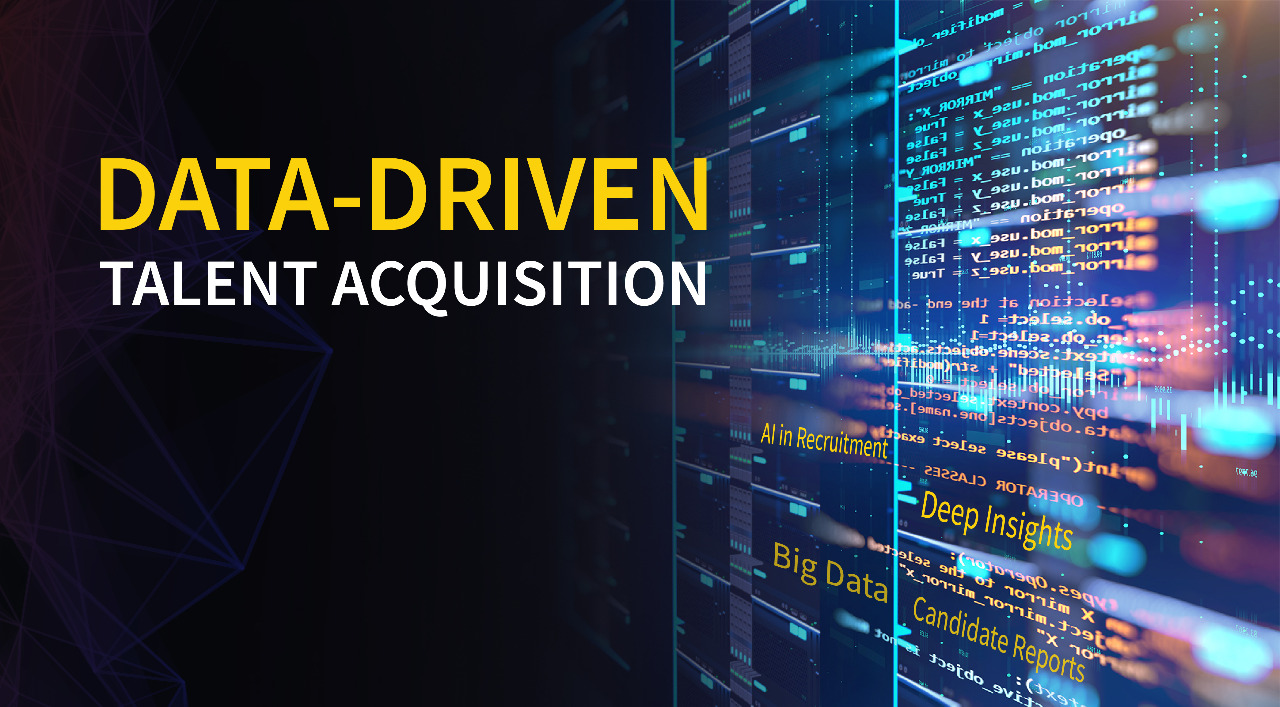Data-Driven Talent Acquisition
Written By Neha Ahmed
“Bad” and “hire” are two words HR managers never want to hear said together. There are two reasons for that: firstly, it undermines the trust in the recruitment process and secondly, it is a very costly problem. Based on the cost of recruiting, hiring and onboarding a new employee, the cost of a poor hire can be up to $240,000. On top of it, there are costs incurred from lower productivity, lower employee engagement, a damaged employer brand, and higher manager time spent on alleviating underperformance.
Data-driven talent acquisition is the sin qua non to attracting and retaining the right talent needed to accomplish business objectives — and hiring competent people at the right price.
The recruitment process is a treasure trove of data, and when mined carefully, it gives away valuable information on whether a candidate will or will not be the high performing employee your company is seeking. The difference is all about making decisions based on gut feeling and making them based on facts. And this is where talent acquisition analytics comes in.
So what is talent acquisition analytics? It refers to “using data to support decision making related to recruitment and onboarding processes, activities, and outcomes.” Talent acquisition analytics takes this manual process into the digital age, enabling recruiters to accurately use data-driven models to predict not just employee performance, but also tenure,fit, and loyalty.

According to LinkedIn’s Global Recruiting Trends 2018, 50% of recruiting professionals use big data as part of their strategy, which has helped them with hiring top tier talent and increased their employee retention by 56%.
Measuring Recruitment Success with Talent Acquisition Metrics
A data-driven recruitment process is contingent upon tracking the right metrics.
Since recruitment is fundamentally a specialized form of marketing, it is rooted in data. You run a great number of activities in order to attract the right person to your organization. And to ensure the process is effective, you need to learn from the available data.
Let’s look at a few key metrics for a data-driven talent acquisition process:
- Time-to-hire
- Cost-to-hire or ROI
- Quality of hire
- Candidate sources (adverts, agencies, etc)
- Turnover and retention
- Application completion rate
- Sourcing channel cost
Benefits of Data-Driven Talent Acquisition
Recruiters reap enormous benefits by employing a data-driven recruitment process. When you regularly track and analyze this data, you take are more strategic, see a significant improvement in the quality of candidates as well as make better use of you recruitment expense.

Here are some major benefits of data-driven talent acquisition:
1. Stop making decisions “from the gut”
Most hiring managers have experienced a situation where they have to make the difficult decision of choosing between two or more incredibly talented candidates for a job role. In such a situation, it is nearly impossible to prevent the unconscious bias from creeping into the recruitment process and not make a decision based on gut feeling.
Data-driven talent acquisition uncovers variables that you may not have seen, allowing you to analyze your process rather than operating blind, so your process is inherently more strategic.
When you have a better understanding of your expenditure, you can allocate it better. Plus, by streamlining your process, you’re likely to acquire a better understanding of time required for each stage, so you can ultimately plan and schedule accordingly. Similarly, there might be some “intangibles” hidden in one of your candidates that commonly make top performers so effective. With data, you can view the bigger picture for your recruitment.
2. Enhance the candidate experience
Despite the fact that candidate experience has been a trending topic for decades, many organizations still struggle with improving this fundamental part of the hiring process. There are multiple areas a recruiting team might need to work on, but it needs to figure out which ones are its organization guilty of.
It is with the help of analytics that the factors impacting candidate experience can be brought to the forefront, and a workforce intelligence solution can assist you quickly measure the effectiveness of each. If, for instance, the metrics around your application process indicate that candidates are falling off at the same point, then there must be a strong reason behind it. The reason could be that this step is redundant or too exhaustive for candidates, which ultimately propels them to leave the application incomplete.
Identifying these data points will allow you clear the obstructions that could be holding back the most qualified candidates from completing the application process. Resultantly, you deliver a top-of-the-line candidate experience to your applicants.
3. Save valuable time
Data can allow you to optimize all the myriads of aspects of recruitment. It is a benefit that one cannot enough emphasize upon. Not only can it help you instantly identify the source of bottlenecks and tackle them but also gain insight into the parts that need improvement.
For example, workforce analytics provides you confident answers on how long it is likely to take to hire for a certain role, giving you detailed insight into time required in each stage of the hiring process.
4. Ensure diversity into hiring process
With the traditional recruiting methods, it is quite difficult to find out if you’ll meet your diversity targets and maintain equity during the process. So, rather than making wild guesses, it is a good idea to use analytics to continuously keep an eye on your recruiting funnel for important demographic ratios such as gender, ethnicity, and race. This will help you monitor diversity and apply the right evidence-based programs to foster diversity throughout your pipeline.
Final Word
Recruitment analytics is an indispensable ingredient of hiring in the 21st century.
If used wisely, it can help you make better hiring decisions and ultimately build a stronger workforce. Moreover, this shift to data-driven decision-making will not only increase your productivity as a recruiter but also bring more transparency to key performance indicators (KPIs) and processes. Therefore, it is important to know what metrics to track, understand what the data is telling and then smartly use it to make meaningful improvements.
In a nutshell, data-driven talent acquisition enables you to continuously optimize your hiring processes and induct talented hires, even under challenging and unforeseen circumstances.
